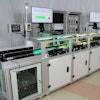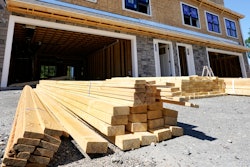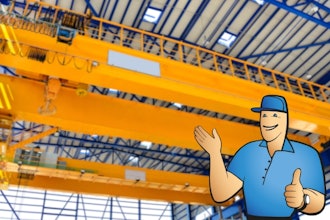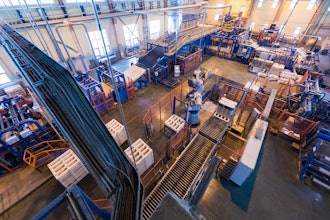Whether your manufacturing business utilizes sheet metal brakes for specific operations or your company is operating in the metalworks industry, these machines can be used for various processes. If your business needs to bend any type of metal for any purpose, you will benefit from investing in a sheet metal brake. That said, there are a few different types of sheet metal brakes, and they each have their benefits in use.
To help you pick the most suitable sheet metal brakes for your business, we have compiled this guide that breaks down how each device is used safely. In some cases, your business may benefit from all three major types of metal brakes, depending on the specifics of your functions.
Box And Pan Or Finger Sheet Metal Brake
The box and pan brake is most commonly known as the finger brake, and a 48-inch metal brake is a good choice for most businesses. This type of metal brake is referred to as a finger brake as it comes with a series of steel fingers in different widths. This metal brake is best for making boxes, pans, and other objects in the same category. To make objects with this brake, you will need to use the different steel fingers to create the bend for the shape you are after. Each steel finger is secured with thumbscrews, so you will need to be sure that each finger is securely fastened and tightened firmly before using the metal brake to create box-like shapes out of metal.
There are various sizes of box and pan metal brake devices on the market, and they are also available in different materials. Different devices will also allow for various gauges of materials, so be sure to evaluate your options before investing in the correct box and pan brake devices for your business.
Cornice Brake
The cornice metal brake is the most commonly used type of device on the market, as it has been around for quite a while, with its patent being released back in 1882. However, the downfall of this tool is that it is significantly larger than the other types of sheet metal brakes on the market. As a result, it is most suitable for larger-sized businesses that work with extensive metal bending for their processes. This metal brake can make straight bends and straightforward creases across sheets of various types of metal materials.
The cornice brake works similarly to the pan and box brake, and it can be adjusted to handle various metal thicknesses and bend a variety of shapes. It may offer slightly more bending techniques than the standard box and pan brake as a result. However, the cornice brake is not as easy to work with, and suitable training is essential for employees.
Press Metal Brake
The press metal brake is most suitable when bending thicker metals into more complex parts. Unfortunately, the cornice brake and the box and pan brake do not hold the same capabilities and are more suitable for thinner metals and more straightforward bending processes. So if your business requires more precision when it comes to metalworks, you should opt for a press metal brake. This tool uses hydraulic and mechanical components to apply the necessary force when bending metals. However, because these machines are pretty innovative, they can be pricey and will require ongoing maintenance.
Safe Usage Tips For All Metal Brakes
Once you have chosen the correct type of metal brake for your business needs, you must prioritize safe usage. The same principles of safe usage will apply regardless of the type of brake your business is using. First, you must clear the area before the machine is used. Sheet metal can be pretty sharp, and injuries can occur if enough space is not available when working with the devices. Next, you will need to prepare the sheet metal by marking the areas that need to be bent before making any cuts. This step will reduce errors.
If you are using large sheets of metal, you must ensure employees have help to avoid accidents. Even though sheet metal is not generally heavy, it can be flimsy, and it is sharp, and accidents can happen. While using sheet metal brakes is relatively straightforward, it is crucial to ensure employees are adequately trained to use the machinery. So be sure to invest in suitable training programs for your employees that include health and safety measures to avoid injuries in the workplace that will negatively impact your business and its functions.






















